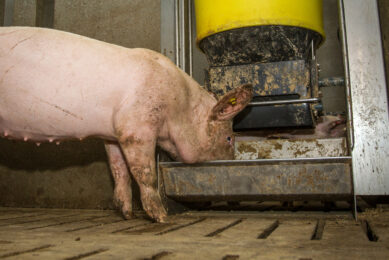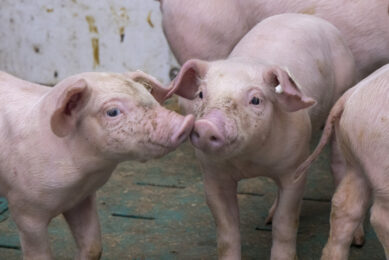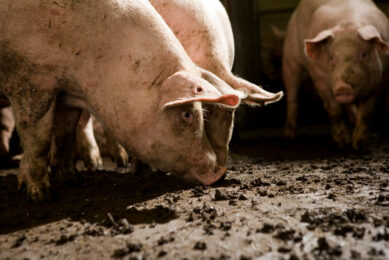Farm visit Ontario part 2: a look inside the sow house
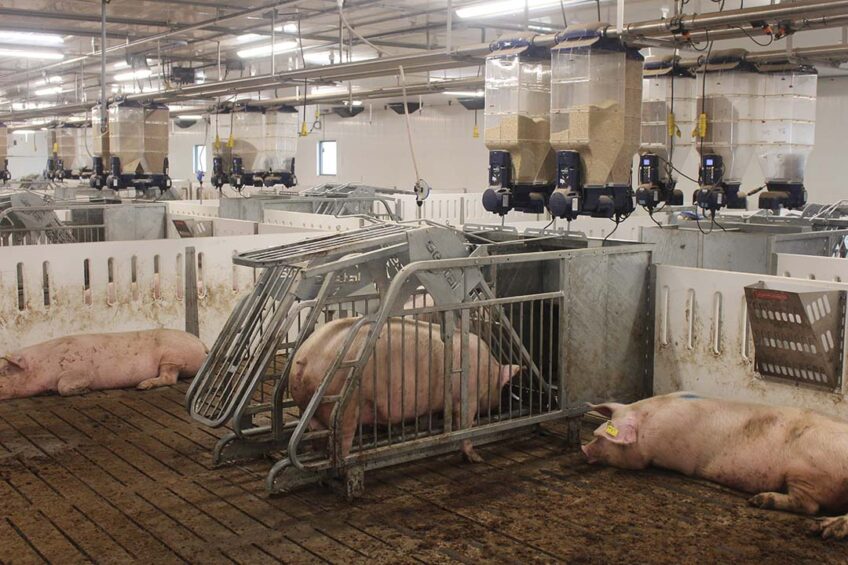
Free farrowing, intact boars and loads of nutrition research. In terms of set-up and research ideas, the new Ontario Swine Research Centre near Elora, ON, Canada leads the way in North America. In the previous part, the Ontario Swine Research Centre was introduced. This follow-up article takes a look in the lactation and breeding facilities.
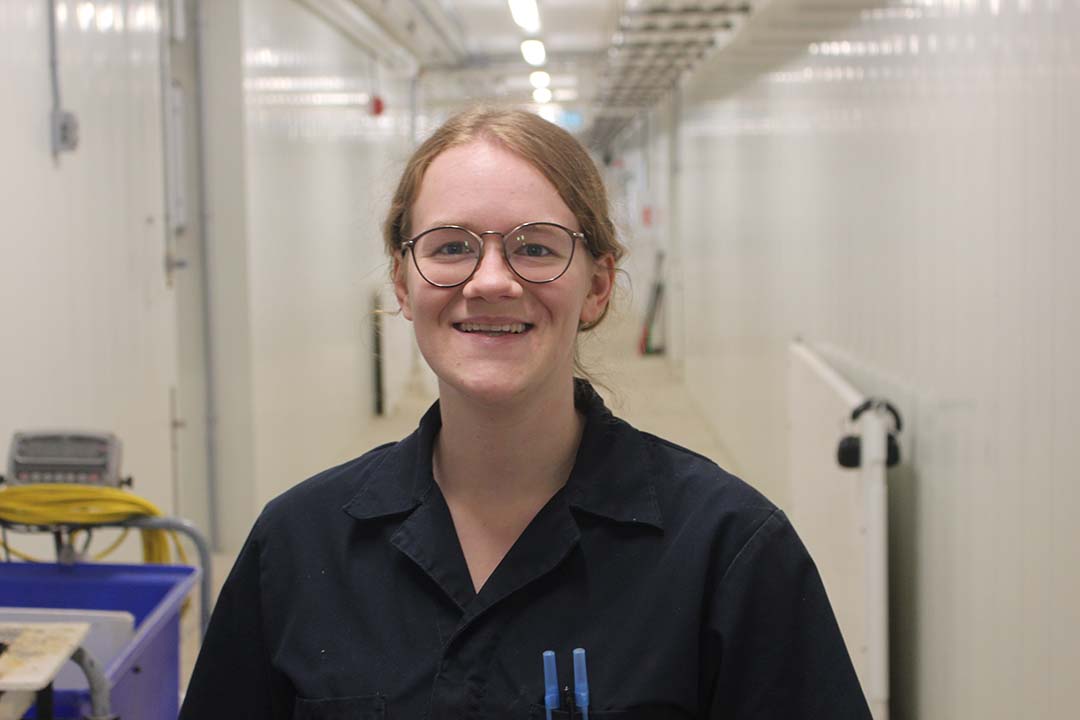
Nutrition is a key focus of the University of Guelph – a tradition that has a firm basis by the legacy of the late Prof Kees de Lange. At the time of the visit, MSc student Vanessa Kloostra for instance focused on providing different levels of protein to sows during gestation in order to reach a clear verdict what approach might work best in terms of milk production, and ultimately piglet growth during lactation.
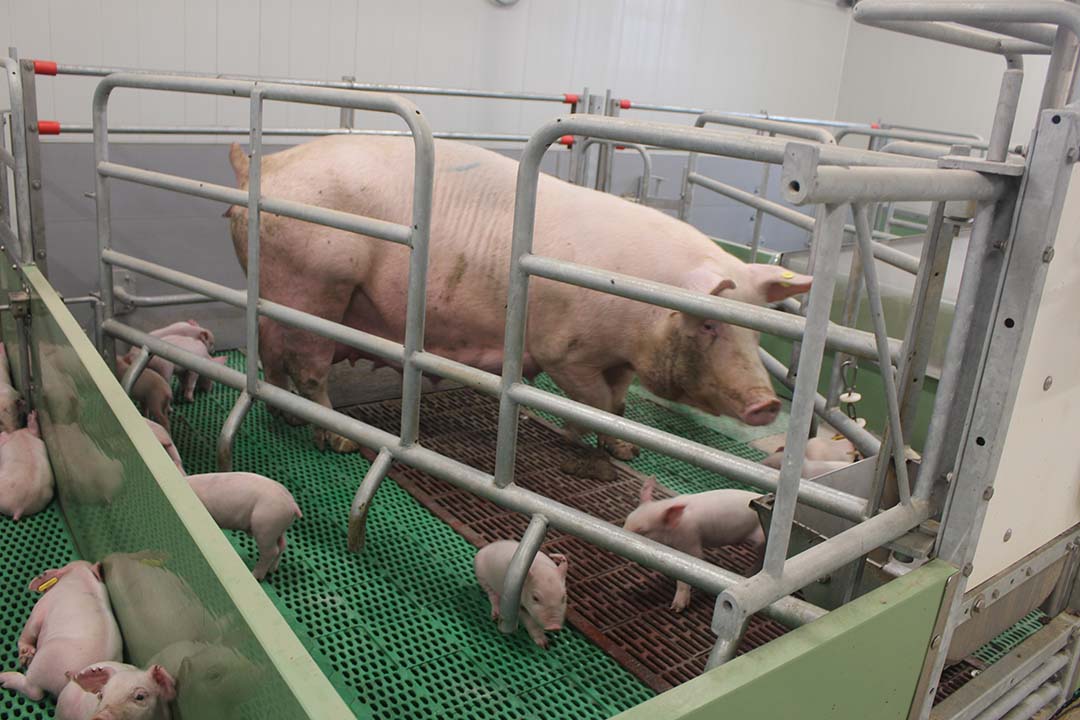
Double set of automatic Gestal feeders
That type of research that can be carried out with ease, as one of the novelties was to equip each sow place in the lactation rooms with a double set of automatic Gestal feeders, provided by Canadian swine feeding equipment company Jyga Technologies. The systems work with a transponder which connects to a sow’s individual ear tags. As each automatic hopper has a double compartment, 4 feed reservoirs are available per sow place, allowing researchers to come up with loads of different feed combinations becoming available for the sows. In a special computer room elsewhere in the facility, it is easy enough to open overviews to exactly see which sow ate which type of feed, and how much she consumed of this for instance.
In total, there are 5 farrowing rooms with 14 pens per room, with weaning typically happening at 21 days. The pens are designed by Vereijken, a manufacturer from the Netherlands belonging to the Cooperl group.
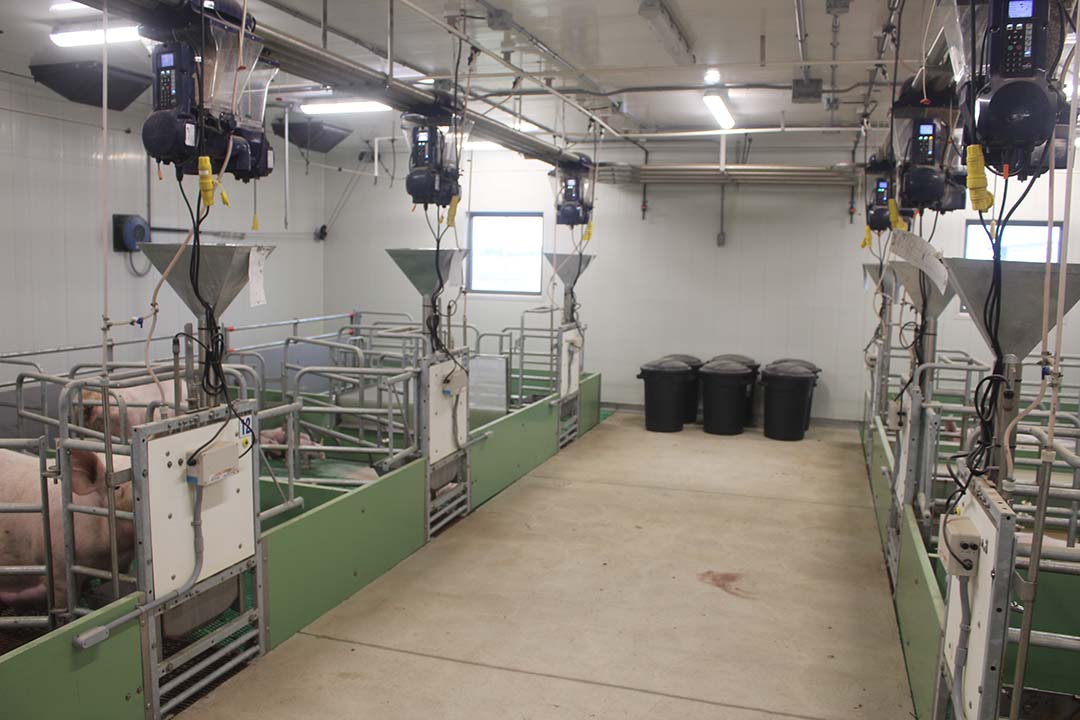
Wider space
The pens are equipped with free farrowing crates with temporary confinement – so sows can enjoy a wider space a few days after farrowing, when all piglets have had all their treatments and castration. A similar system was already used in the previous facility, but in the current set-up the sows have more space, explains Troy McElwain, technical foreperson at the Ontario Swine Research Centre. “The current size of 8 x 9 ft (2.4 x 2.7 m) is bigger than the industry standard. In the old situation they used to be 6 x 8 ft (1.8 x 2.4 m), and we found that if we opened up the crate, so the sow could move, the piglets still would get crushed. In this new set-up, the piglets simply have more space to run away to.”
Attention has been paid to the purposes of research as well as visitors, hence the aisles are almost 3 m wide. McElwain explains, “That way trolleys can pass easily to do tests – and if we are here with large groups of visitors, they will all have a place to stand.”
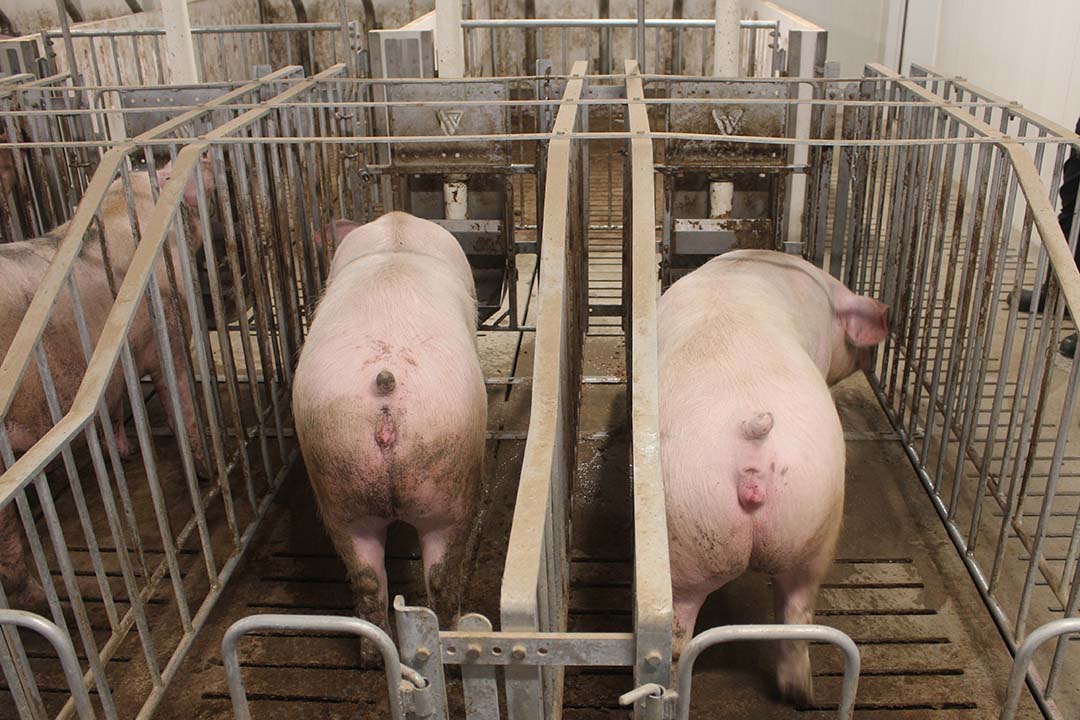
Breeding
Under Canadian welfare standards, during breeding the sows can be kept in stalls for about 28 days, plus 7 days for a maximum of 35 days. The breeding room, however, features both bred sows in individual stalls as well as in groups of 4 to 5. Care has been taken to leave some space between each sow stall, so the animals cannot get injured by the sow in the neighbouring crate.
The feeding system in the stalls is simpler than in the lactation barn, i.e. without transponders, simply because it is already known in advance what type and how much feed is being provided.
Surprises in the room for gestating sows
The room for gestating sows holds a few surprises as well. Gestating sows are kept in up to 12 groups of 24 sows, with each pen having 2 sets of double Gestal feeders. The pens are spacious and have been equipped with additional low walls, so sows have plenty of hide-outs if that makes them feel comfortable. The animals appear sedate, even though the metal feeding stalls can slam tight with a bang as soon as a sow leaves.
Automatic lighting system
An interesting feature – here and throughout the farm – is the automatic lighting system. Shortly before 6 am, the lights will gradually be switched on, and shortly before 6 pm, the lights will gradually go off. That way the animals are provided with a natural day and night rhythm.



